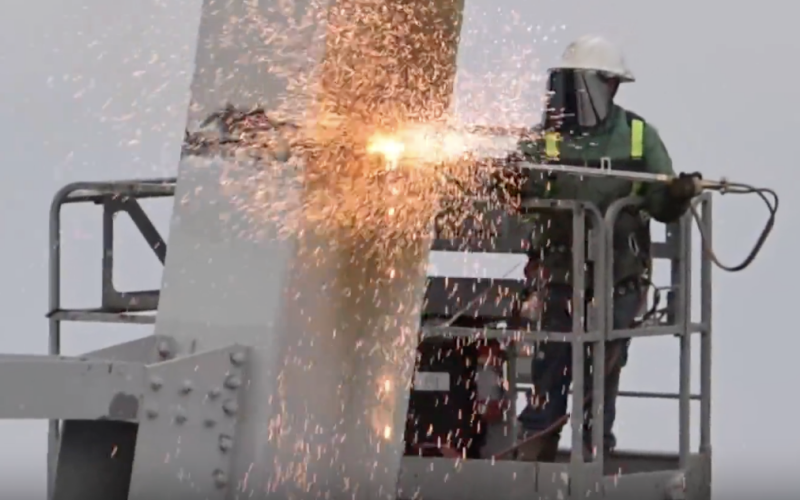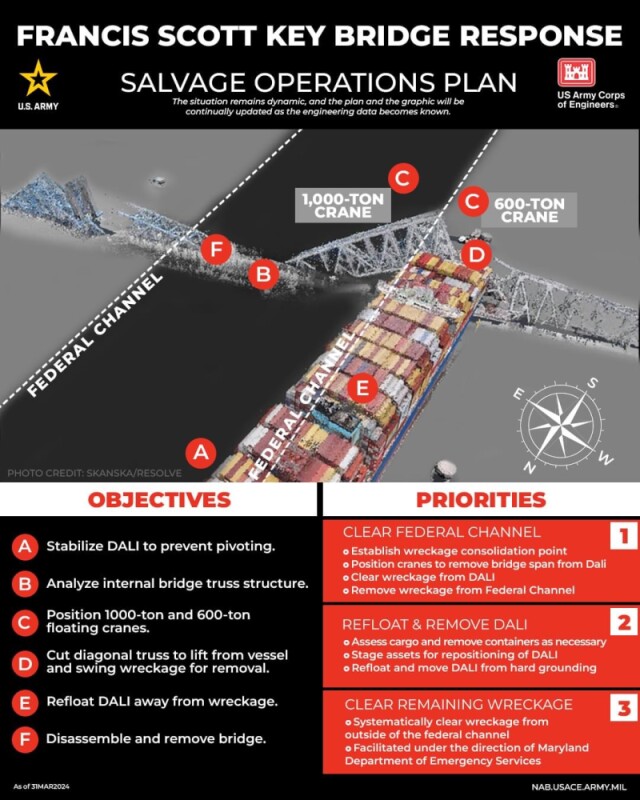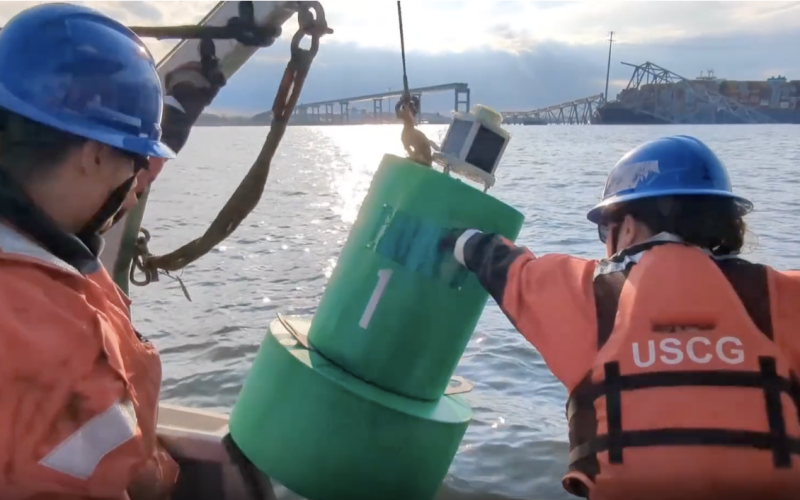With the first removal of debris from the fallen Francis Scott Key bridge, Coast Guard officials are planning to open a temporary channel that would permit some tugs and barges to transit to the port of Baltimore.
“This will mark an important first step along the road to reopening the port of Baltimore,” said Capt. David O’Connell, the federal on-scene coordinator for Key Bridge Response 2024 on Sunday. “By opening this alternate route, we will support the flow of marine traffic into Baltimore.”
The arrival of the heavy lift crane barge Chesapeake 1000, and more equipment like Weeks Marine’s Weeks 533 500-ton crane, enabled the first removal of pieces on the north side of the bridge across the Patapsco River.
The first lifting Saturday of a bridge section was just a first operation of several being undertaken under the guidance of engineers, said Rear Adm. Shannon Gury, commander of the Coast Guard Fifth District, during a riverside press briefing Saturday with Maryland Gov. Wes Moore and other officials.

“This is the first of many steps going forward but it’s a huge milestone,” said Maryland Secretary of Transportation Paul Wiedefeld. While most of the port remained closed Tradepoint Atlantic is moving cars and vehicles at its Sparrows Point logistics terminal, said Wiedefeld.
Crews were deploying marker buoys Saturday in preparation for opening limited access to t
The temporary channel will be marked with government lighted aids to navigation and will have a controlling depth of 11’, feet, a 264’ horizontal clearance, and vertical clearance 96’, according to the Coast Guard joint command.
A 2,000-yard safety zone remained in effect around the bridge.





